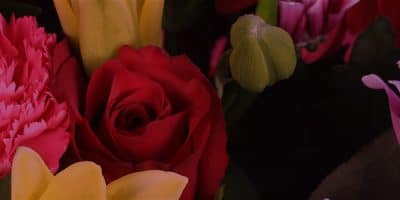Dev Deepawali 2020: Significance, History of Dev Deepawali and How to Celebrate Deepawali

A festival that celebrates light and creates a sense of day in the night, Dev Deepawali is all about dispelling darkness with a floral touch.
Significance & History
Known as the Festival of Lights of the Gods, Dev Deepawali is celebrated in Varanasi (Kashi or Banaras) and will be on November 29th this year. According to mythology this day is celebrated as Lord Vishnu returned to the heavens after killing King Bali and the devas celebrated his return with lamps. In the Shrimad Bhagwat there is a story of a demon Muydaanav who built three aerial cities with gold, silver and iron which was given to the demons who flew with them and destroyed the places where they landed. Lord Shiva was approached for succor and he went on to destroy these three cities and was named Tripurari and the devas celebrated which is now Dev Deepawali.
Other significant events from history indicate that it was on this date that Bhaktimata the mother of Bhagwan Swaminaryan was born as was the proponent of Dwaitadvait philosophy and Sanak Sampraday, Nimbark Acharya. This is also the day when the wedding of Tulsi with Vishnu is celebrated. The tradition of lighting the lamps on was first started at the Panchganga Ghat in 1985. Therefore, the festival is celebrated with great pomp and splendor in the city. In fact, it is one of the best times to see the city of Varanasi.
Festive Fervour
Celebrated 15 days after Diwali, on the 11th day of the month of Kartik in Varanasi, Uttar Pradesh, India, the festival falls on the full moon typically in November or December. The festival that happens on the famed Ghats of Varanasi sees millions of earthen lamps being lit to honour the Ganges as it is believed that the gods descend to the earth to bathe in the Ganga and is called the Tripura Purnima Snan. This is a five-day festival that starts on Prabodhini Ekadashi and ends on Kartik Poornima. This is when the ghats are decked with lamps and the river is full of floating lamps as well. The ritual of floating the lamp in the river is called Deepdan and a small bowl made with dried leaves and decorated with flowers with a single diya is lit and set afloat. The sight of the small diyas floating on the river is a mesmerizing sight.
The city is decked up as well and houses are also decorated with oil lamps and rangolis. There are firecrackers that are burst in the night and decorated deities are taken on processions on the streets as well. Devotees prefer to take a bath in the Ganga on these days – which is called the kartik snan. The Ganga aarti is also performed in the evening alongside the Dashashwamedh ghat and this is one of the best sights you will see. The aarti is performed by priests who hold up tiered lamps saluting the River Ganga. As the festival is a favorite with tourists and photography enthusiasts, the Ganga Mahotsav is held over these five days in Varanasi to showcase the rich cultural heritage of the city. Apart from cultural programs there is classical music, a country boat race, an arts and crafts fair, sculpture displays and martial arts as part of the festivities. Post the aarti it is recommended that you take a boat ride on the river where you can see the brightly lit ghats.
Light it Up
Dev Deepawali is a celebration of light and is a symbolic festival that celebrates the victory of good over evil. The festivities at the ghats involve the use of flowers, in the decorations, in rangolis as well as in the deepdan that is used to float the diyas in the river. The flowers add a colourful splash to the festival as well. In fact, the sight of the lit up ghats – there are 87 in all against the full moon is a magical almost ethereal sight that will stay with you much longer after you have witnessed it. Every ghat here has its own small celebration on Dev Deepawali and it is interesting to see the same as you walk around or take a boat ride. In fact, if you want to soak into the sights and sounds of this festival it is recommended that you walk the four km stretch from Assi Ghat to Dashashwamedh Ghat which will bring you up close with the wonderful festival.




